Stoat
Mustela Erminea
Average adults weigh about 200 grams!
Advertisement
Stoat Scientific Classification
- Kingdom
- Animalia
- Phylum
- Chordata
- Class
- Mammalia
- Order
- Carnivora
- Family
- Mustelidae
- Genus
- Mustela
- Scientific Name
- Mustela Erminea
Read our Complete Guide to Classification of Animals.
Stoat Conservation Status
Stoat Facts
- Main Prey
- Rabbits, Mice, Insects
- Habitat
- Moorland and woodlands
- Predators
- Fox, Snake, Wild Cats
- Diet
- Carnivore
- Average Litter Size
- 8
“The stoat is the small, but bold, predator of the Northern Hemisphere.”
Stoats may be small animals, but this doesn’t stop them from being energetic and ambitious predators across a wide geographic range that includes large swaths of North America, Europe, and Asia. They generally prefer temperate, cool and cold climates and adapt to winter temperatures by donning a distinctive white coat, which has long been known by trappers as the luxurious “ermine” material. They also have high invasive potential when introduced to new environments and can decimate native populations of rodents, birds, and other species. The name stoat comes from an old Dutch word that means “bold” or “pushy,” which is an apt description for these aggressive carnivores.
4 Incredible Stoat Facts!
- Changing fashion: Stoats are animals that shed their coats each year and may grow a pure white layer of fur, called ermine, to see them through the winter months.
- Tiny invaders: Stoats are voracious and aggressive predators that can seriously damage new environments that they invade.
- Delayed birth: Female stoats carry embryos in a form of stasis for almost an entire year before they begin gestation in the uterus.
- Benefits of age: Older male stoats can control stretches of territory over 50 times bigger than younger males.
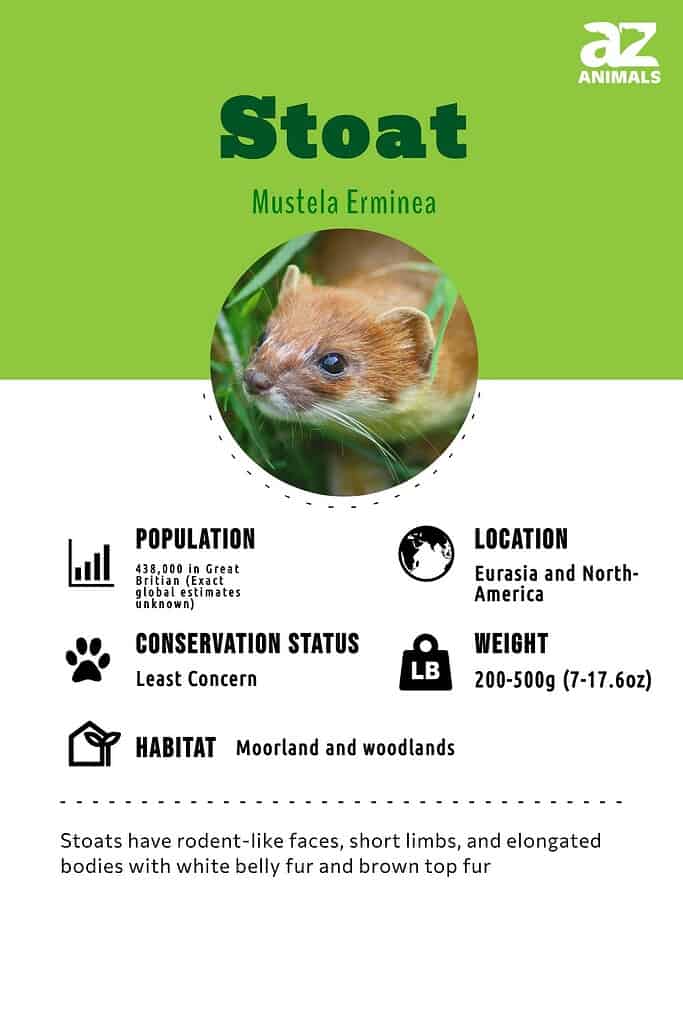
Scientific Name

Although stoats are referred to as ermine, the term can also be applied to its other relatives that are capable of growing pristine white coats in winter
©Jukka Jantunen/Shutterstock.com
The stoat, also known as the short-tailed weasel, is often mistaken for other mustelids like weasels or ferrets. Their external similarities only compound the potential for confusion caused by the common name “ermine,” which can be applied to stoats as well as several other related species that grow a pure white coat during the winter months. Stoats are known as Mustela erminea by the scientific community and are members of the Mustelidae family, which is part of the Mammalia class.
Evolution
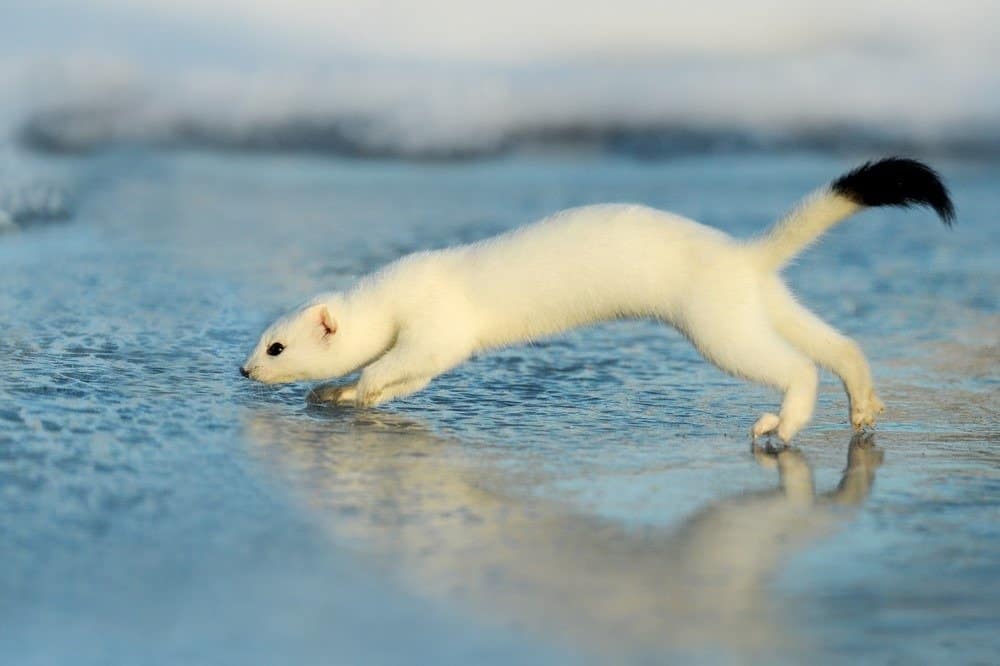
The ancestor of the stoat first appeared about 2 million years ago and lived in Eurasia
©Krasula/Shutterstock.com
The evolutionary history of the stoat goes back to about 6 million years ago, when rolling plains replaced northern forests. This change resulted in an significant increase in small-sized terrestial rodents. Around 4 million years after this process, the long-tailed weasel’s ancestor emerged in North America. Soon afterwards, its Eurasian counterpart the ancestor of the stoat known as Mustela palerminea emerged on the evolutionary scene in Central and Eastern Europe. Scientists assert that the earlier form of the stoat was larger in size and that it was actually reunited with the long-tailed weasel 1.5 million years later following the emergence of the Bering land bridge.
Appearance

Although stoats are referred to as short-tailed weasels, stoats actually have longer tails than their relatives
Stoats are animals that share many physical features with weasels and ferrets, including a markedly elongated body that is almost serpentine-like in appearance. Adults range in length from 7 to 13 inches and typically weigh between 6 and 9 ounces, with males being about 25 percent larger than females. They have a small, triangular head and a uniform, symmetrical body shape that is well-suited for following prey into narrow burrows or tunnels.
Their typical fur coloration is primarily brown with a white bib and underbelly with a black tip on the very end of the tail. Despite its alternate name as the short-tailed weasel, stoats usually have longer tails than weasels do. Notably, stoats may grow a pure white coat during cold winter months or if they reside in particularly cold climates. It’s only when wearing this coat that they can properly be called ermine and are desired by hunters or trappers for their pelts.
Behavior
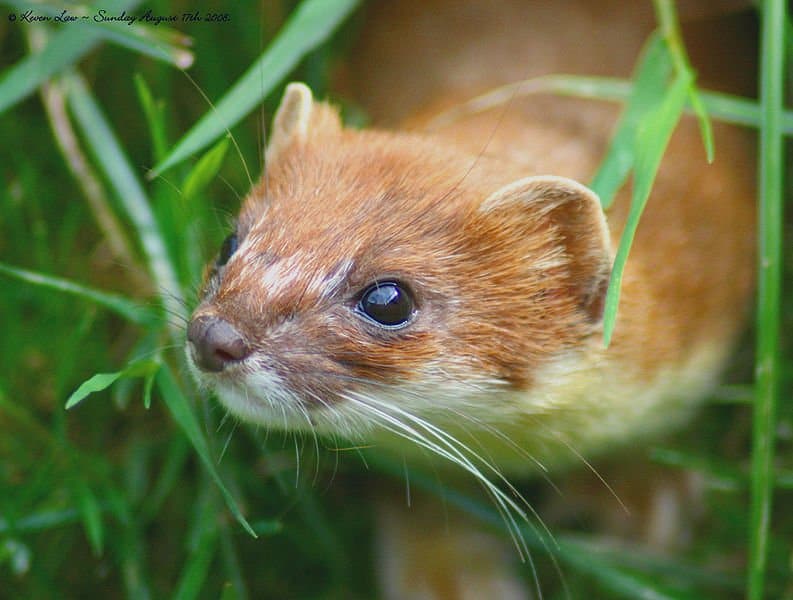
Male stoats are territorial, especially during mating season
Unlike their mustelid cousins, stoats move with an arched back in a bouncing gait that makes them look like they are hopping along. Despite the apparent awkward motion, they are actually quite agile, lithe, and fast. Males are somewhat territorial, especially during mating season, and older males tend to control much more space than younger ones. They don’t dig their own burrows, but instead reside in the underground tunnels or nests of prey that they’ve slain.
Habitat
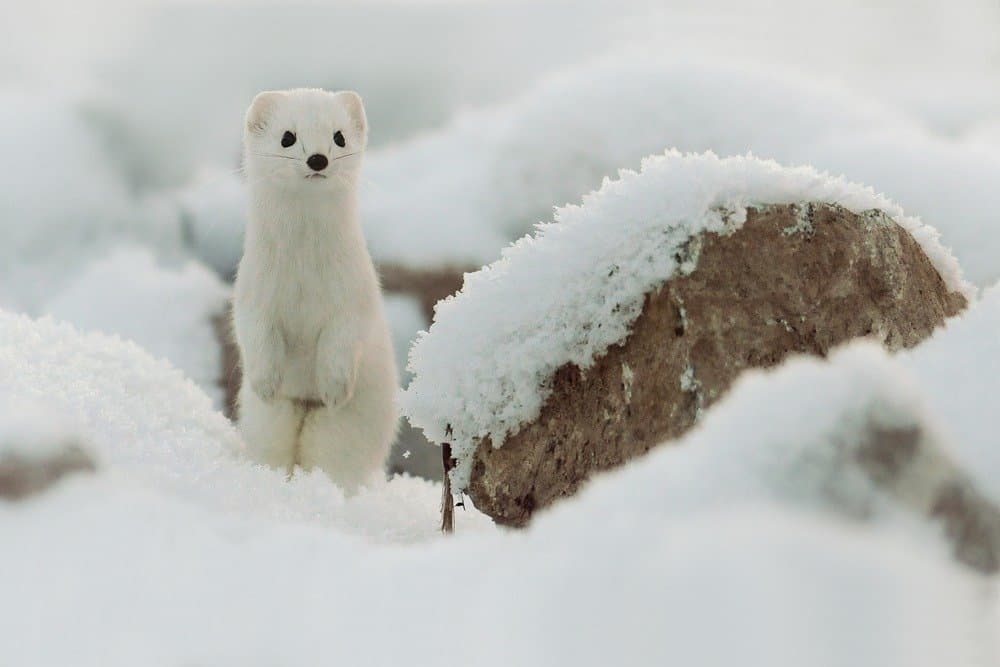
Stoats generally live in cool, temperate regions
©Krasula/Shutterstock.com
Stoats are flexible and adventurous predators, so they can be found just about anywhere where their prey lives. Their primary habitat is usually woodlands, grasslands, and moorlands in cool and temperate regions. However, they are also known to spread into coastal regions and live near farms, orchards, and other areas in close proximity to humans. Their flexible body and low physical profile make it easy for them to hunt and hide in many kinds of environments.
The species has a vast geographic distribution that covers much of the northern hemisphere, including most of Europe, Canada, Alaska, and Russia. Separation of local populations across such massive distances has led to the development of dozens of identified subspecies that have slightly different body proportions, fur density, and color markings to better suit the temperature range or camouflage needs of their local habitat.
Diet
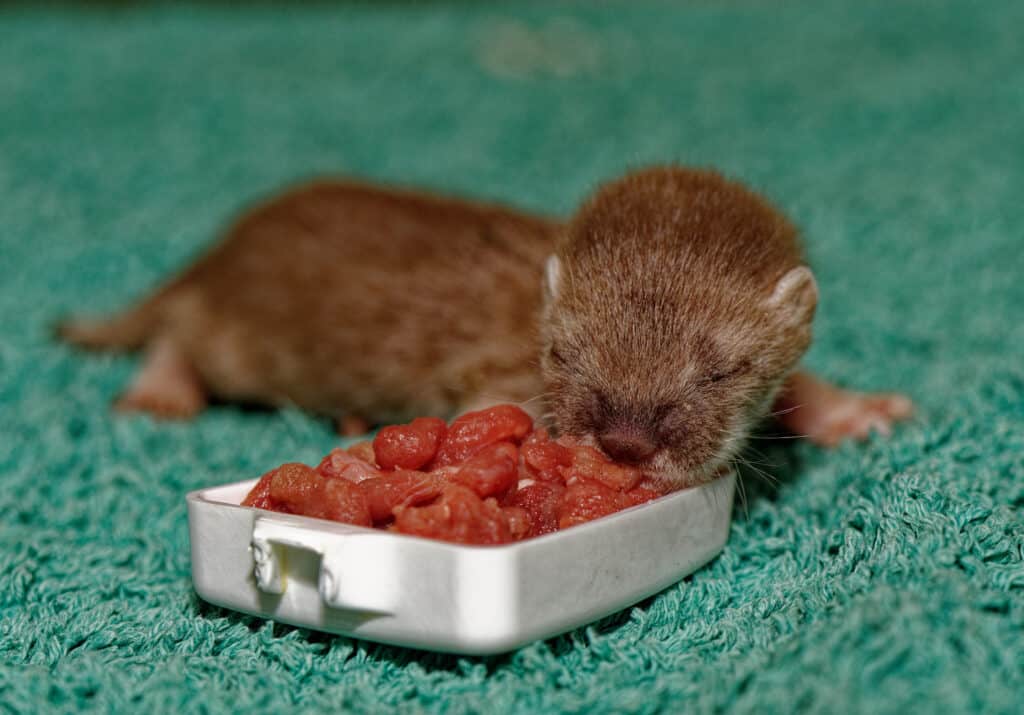
Stoats are carnivores and hunt rodents, reptiles, and amphibians in the wild
©Colin Seddon/Shutterstock.com
Stoats are ambitious carnivores that prey on many kinds of prey species, including some animals that are notably bigger than they are. They can be active during the day or night and rely on a combination of speed, tenacity and stealth to catch their prey. Their bodies are well-suited to following burrowing animals into their den, which is a primary defense mechanism many prey animals have against larger predators.
What do stoats eat?
Small rodents are a staple feature of the stoat’s diet, including mice, voles, and hamsters. They aren’t all that picky about what they eat though, so almost any small animal is on the table. Stoats are known to target amphibians, lizards, birds, and even insects when necessary. They can also take down hares and rabbits that are equal or greater than them in size by striking at their neck.
Predators and Threats
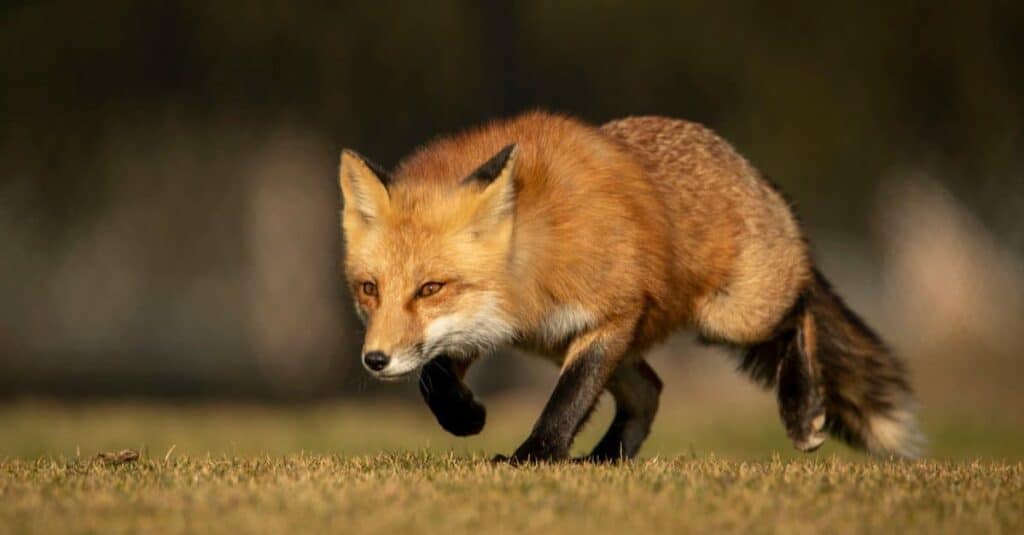
Foxes can constitute a risk to stoats since they may hunt them
©Jackie Connelly-Fornuff/Shutterstock.com
Stoats can have various natural predators depending on their native environment. Birds of prey, like eagles and larger hawks, are a prime threat due to their speed and large viewing distance. Larger carnivorous mammals are also a threat, especially foxes and other animals that share their stealthy, crafty behavior.
Humans are one of the primary threats to wild stoats, although they are rarely sought after as a source of food. The fur of the animal’s winter coat, or ermine, has been a prized commodity for centuries. It is still a traditional element of many types of formal European clothes and has plenty of applications in modern fashion. Stoats are typically captured with traps or hunting dogs as guns and other weapons are likely to seriously damage and devalue the pelt.
Despite a long history of hunting by humans, stoats are still relatively common throughout their wide native range. Their conservation status is listed as least concern, and there are few if any restrictions on hunting or trapping the animals in most countries. One of the biggest natural threats to younger stoats is a lack of available hunting territory and prey competition with mature members of their species.
Reproduction, Babies, and Lifespan
Stoats typically reproduce during spring and early summer, which usually stretches from April to July. The bodies of mature males typically ramp up testosterone production during this period to maximize temporary fertility during the mating season. Increasing day length typically triggers reproductive urges in females, but their period of being “in heat” can be relatively short. Adults may seek multiple partners during a single season and do not remain together to care for young.
Stoats are one of the few animals that undergoes a process called embryonic diapause, which means fertilized eggs don’t immediately implant in the uterus. Instead, they are held in a state of stable hibernation following fertilization for up to 300 days. After this period, they are implanted in the uterus and undergo gestation for 3 to 4 weeks before being born as a live baby.
Baby stoats, called kits, are essentially helpless and are completely reliant on their mother for weeks. Females typically give birth to litters of 5 to 12 kits, which they nurse until they begin the weaning process at about 5 to 6 weeks. Baby stoats are usually independent at about 12 weeks and female young are usually sexually mature at this point. Wild stoats have a life expectancy of 4 to 5 years, but some individuals have lived up to 10 years in captivity.
Population
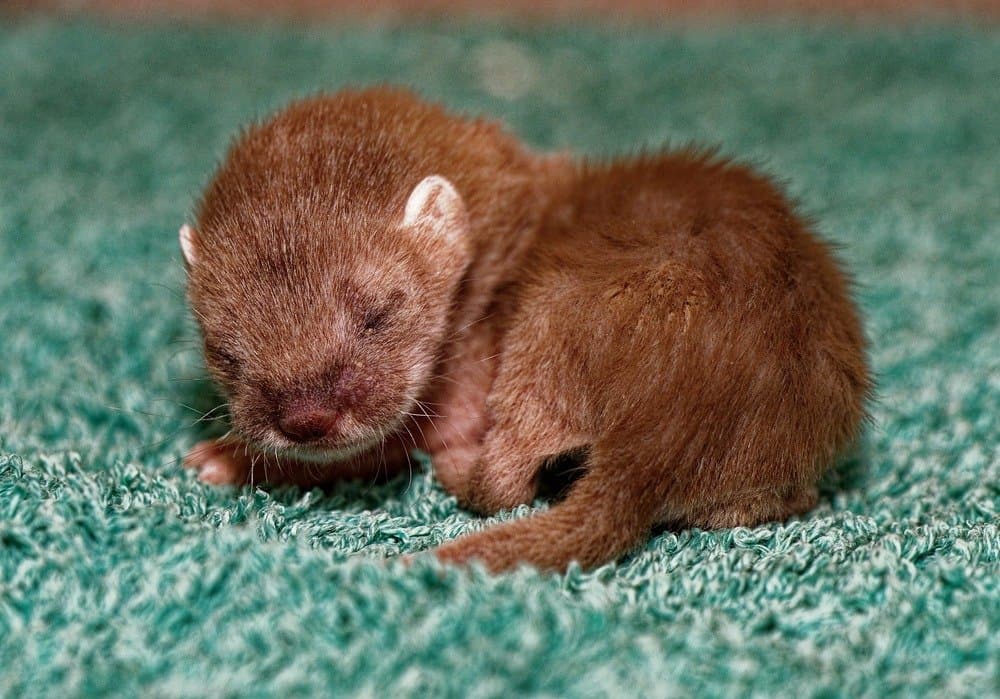
Stoats constitute an invasive species in New Zealand
©Colin Seddon/Shutterstock.com
Exact numbers are unknown due to wide geographic distribution and habitat diversity, but stoats are considered common and not in danger of significant population decline. Their native range includes large portions of North America, almost all of Europe, and a large part of Asia. There are populations within the Arctic circle and various islands, including Greenland and mountainous regions in Japan.
The stoat’s introduction and subsequent wilderness invasion in New Zealand has prompted conservationists there to seek containment strategies to mitigate damage to local wildlife. Ireland is one of a few countries that has restricted hunting and trapping stoats, but there are plenty of regions where hunting for ermine is still an active industry.
View all 293 animals that start with SStoat FAQs (Frequently Asked Questions)
Are stoats carnivores, herbivores, or omnivores?
Stoats are carnivores that seek food by hunting out in the open and pursuing prey down into their burrows. They are known to seek food in both day and night time.
Where do stoats live?
Stoats live in cool and cold climates throughout the northern hemisphere, as well as a few regions south of the equator where they’ve been introduced as an invasive species. They dwell inside burrows of their prey animals and can be found in diverse habitats, ranging from fields and coastal areas to rugged woodlands and orchards.
What do stoats eat?
Stoats are ambitious and flexible predators that eat just about anything they can get. Mice and other rodents are a staple, like they are for weasels and ferrets, but stoats can also hunt insects, amphibians and lizards. They are also known to take down rabbits, hares and other prey animals that are bigger and heavier than they are.
What is difference between stoat and weasel?
Stoats and weasels share many similar characteristics, including a similar body type and preference for rodents as a source of food. However, stoats are much larger than weasels in mass, length and tail size. Stoats also exhibit a distinct “bouncing” gait by arching their back when they move, while weasels run with their body steady and close to the ground.
Are stoats dangerous?
Stoats are not a significant threat to humans and are very unlikely to strike at people unless they are cornered. Animals with rabies may behave in an uncharacteristically aggressive fashion, so they should be avoided when possible. Stoats are very destructive to small farm animals and local wildlife, especially in habitats where they are considered invasive.
Can you have a stoat as a pet?
Stoats have been domesticated in the past, but are not a sought-after pet species in most regions. In fact, it is illegal to keep one as a pet in the United States due to the high risk of abandonment and subsequent invasion of the local ecosystem. Legality of pet ownership depends on local laws and regulations.
What Kingdom do Stoats belong to?
Stoats belong to the Kingdom Animalia.
What class do Stoats belong to?
Stoats belong to the class Mammalia.
What phylum to Stoats belong to?
Stoats belong to the phylum Chordata.
What family do Stoats belong to?
Stoats belong to the family Mustelidae.
What order do Stoats belong to?
Stoats belong to the order Carnivora.
What type of covering do Stoats have?
Stoats are covered in Fur.
What genus do Stoats belong to?
Stoats belong to the genus Mustela.
What are some predators of Stoats?
Predators of Stoats include foxes, snakes, and wild cats.
How many babies do Stoats have?
The average number of babies a Stoat has is 8.
What is an interesting fact about Stoats?
Average adult Stoats weigh about 200 grams!
What is the scientific name for the Stoat?
The scientific name for the Stoat is Mustela Erminea.
What is the lifespan of a Stoat?
Stoats can live for 4 to 6 years.
How fast is a Stoat?
A Stoat can travel at speeds of up to 20 miles per hour.
What's the difference between a stoat and a ferret?
Stoats and ferrets differ in their domesticated status, sizes, and overall appearances, including their coat colors. Read all about them here!
Thank you for reading! Have some feedback for us? Contact the AZ Animals editorial team.
Sources
- Wikipedia, Available here: https://en.wikipedia.org/wiki/Mustelidae
- Wildlife Trusts, Available here: https://www.wildlifetrusts.org/wildlife-explorer/mammals/stoat
- Mammal, Available here: https://www.mammal.org.uk/species-hub/full-species-hub/discover-mammals/species-stoat/
- Discover Wildlife, Available here: https://www.discoverwildlife.com/animal-facts/mammals/how-to-tell-the-difference-between-a-stoat-and-a-weasel/
- , Available here: https://www.doc.govt.nz/nature/pests-and-threats/animal-pests/stoats/
- The Animal Files (1970) https://www.theanimalfiles.com/mammals/carnivores/stoat.html Jump to top

















